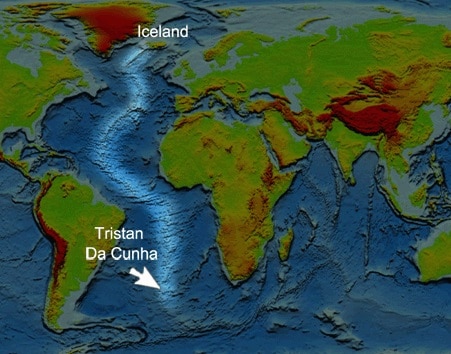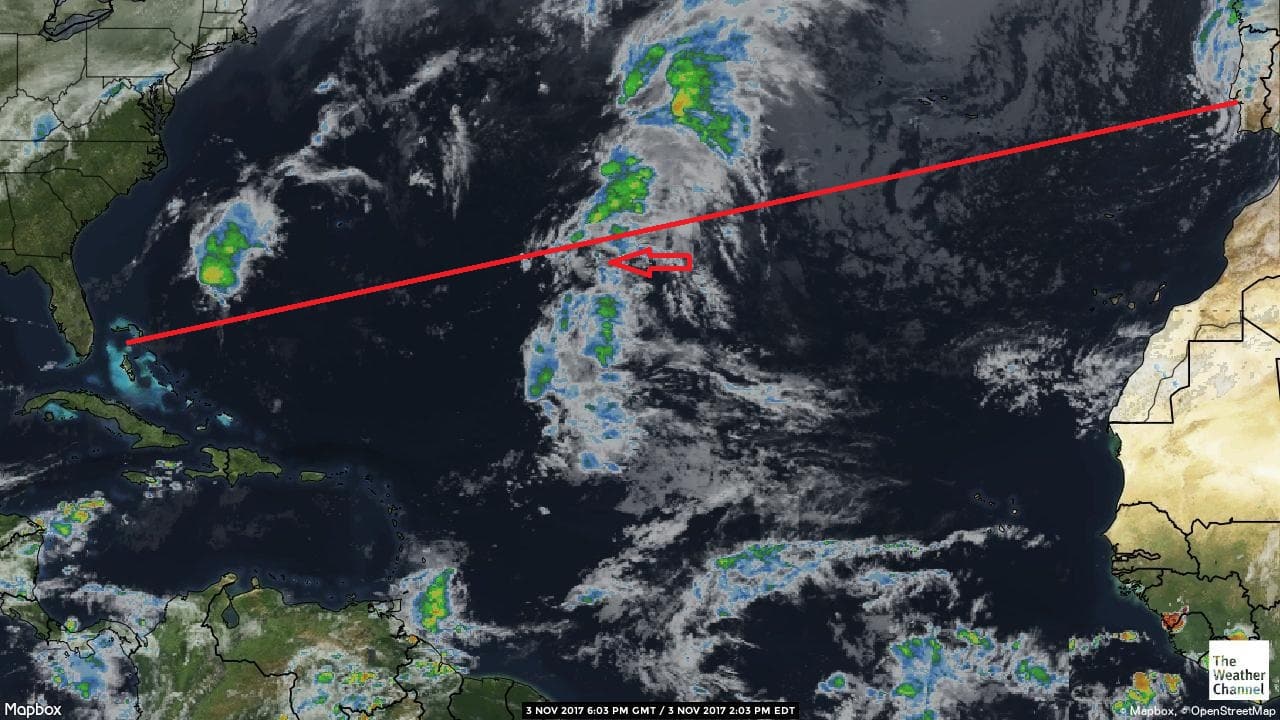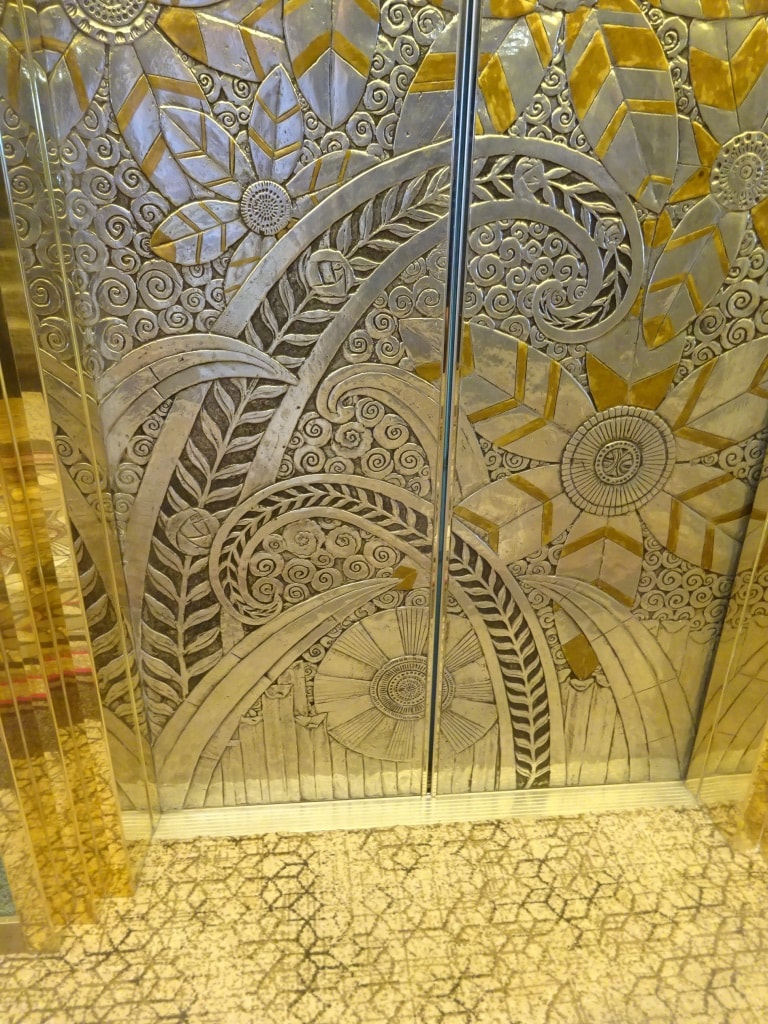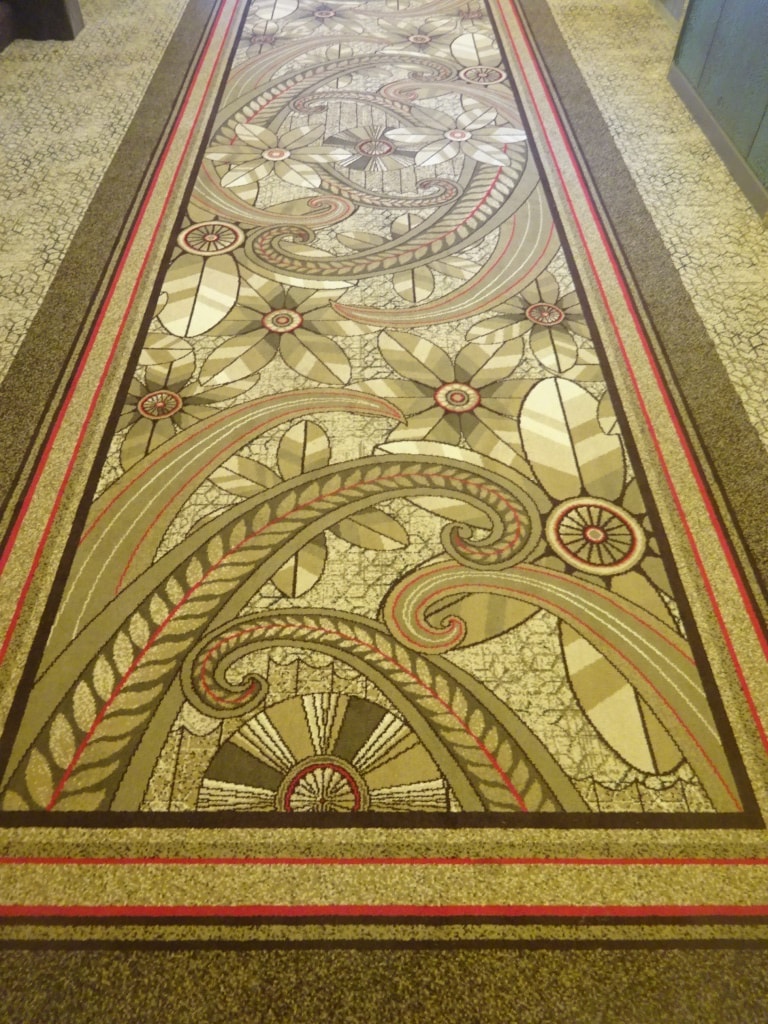I made the statement yesterday that things were looking good and that is tempting fate as today we started to approach a frontal system which is laying over the whole of the Mid North Atlantic. But it is not a bad one. It will bring more wind and it will bring rain but it is not a storm or anything else nasty. So we can live with it, although it will annoy the sun-bathers who were out in force today. It will please the Bo ‘sun though as a good shower will get rid of the salt on the decks. His sailors are trying to keep up with washing down the decks at 05.00 in the morning but they cannot get everywhere before the early risers get in the way. It will take about a day’s sailing to get through it all and then we just have to see if the – small- disturbances located further to the West will affect us.
While we will have rain above us, we have mountains below us. Today we passed over the Mid North Atlantic Ridge. Which is located in the middle of the North Atlantic and that means that we are also in the middle of our crossing. Although we do not see it, it is a very important boundary as it indicates the geological border between Europe and North America. A German gentleman called Mr. Wegener predicted that the whole world, read the continents, were sitting on their own “saucer” and were surfing along over the globe on top of fluid inside of the earth. Those saucers are called plates and we can see where they meet as there is a gap in between them and that is where we normally find volcanos.

The mid North Atlantic ridge follows exactly the contours of the Continents and can thus we consider it the real border of a continent even if it sits underwater.
Wegener was not believed in the beginning as most people found his idea ridiculous because you could not see the movement; but in 1850 the Atlantic Ridge was officially discovered and in 1872 further confirmation came when a route was plotted for the first North Atlantic Telegraph cable. In Iceland the ridge comes above water and runs over the island and you can even walk through it. The plates move by about 2 inches a year and their movement is often noticeable by small or larger earthquakes. The plate is in a way a sort of conveyor belt with North America on the top and this plate is rising right here from the depth and is then disappearing again in a pacific ridge. Not much for us to worry about as it took about 180 million years for North America to drift this far way from Europe so it does not go that fast. But every time the plate takes a hop, there is a fair chance that San Francisco might notice it.
I promised a few blogs ago photos from the interior changes of the Westerdam made in the April 2017 dry dock. The Atrium was rebuilt and also the Crow’s nest. And for the rest a lot of carpet, wall paneling and soft furnishings were done. Let’s start with the carpet. It has now been brought in line with the new and lighter house style of the company which was started with the Koningsdam. So the corridors have a greyish touch with an abstract pattern to it. Very functional.
But what I really like is what they have done in the staircase landings. The pattern in the center part of the landing and lobby now reflects the decoration of the Elevator doors. Maybe not all the guests might make that connection or may not care but I have a weak spot for Art Deco and I think it is magnificent. We have an interior designer / interior Director who looks after all the ships and I think I can clearly see her hand here.
The conversion of the Atrium and the Crows nest are part of the new philosophy of the company to offer our guests more in-depth enrichment while travelling. Hence the decision to combine the Atrium / Meeting area with a location where you can learn something. Thus the decorations on the walls are now in relation to the Rijksmuseum in Amsterdam; well-known from all the Rembrandt paintings. They have decorated the walls with a timeline in years and paintings, giving in this way everybody an idea how painting developed through the centuries. On the forward wall is a led screen on which – as a sort power point show – famous paintings are projected. Guests can sit on comfortable chairs and immerse themselves in Dutch culture. On the starboard side are book shelves with a number of reference books which provide more background information. The front Office remained but the Shore excursion information and sales counter has moved to the Crows nest. Photos will follow tomorrow.
So tomorrow we will find out how wide and how intense the depression will be and afterwards it does not look like there will be much rain at all anymore.




Leave a Reply